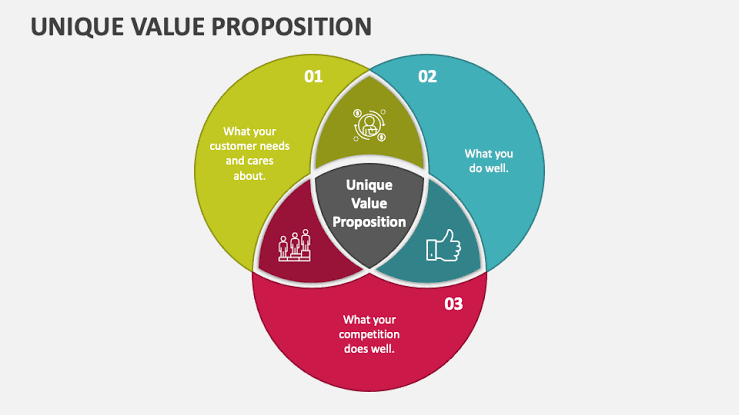Explore how a well-defined Unique Value Proposition (UVP) enhances customer satisfaction. Learn about the connection between UVP and customer expectations, and discover strategies for effectively communicating and delivering on your UVP to improve customer experiences and build long-term loyalty.
The Link Between UVP and Happy Customers
Grasping the connection, between Unique Value Proposition (UVP) and customer satisfaction is essential for businesses seeking lasting success and loyalty. The UVP outlines what sets a companys product or service apart and why customers should opt for it over competitors. Conversely customer satisfaction gauges how effectively a product or service meets or surpasses customer expectations. This article delves into the relationship, between UVP and customer satisfaction showcasing how a thoughtfully crafted UVP can result in increased customer satisfaction and ultimately propel business success.
Defining Unique Value Proposition (UVP)
A Unique Value Proposition (UVP) is a statement that clearly communicates the value and benefits a company offers to its customers. It sets a business apart from its competitors by highlighting its unique features or advantages. An effective UVP addresses the pain points of the audience and shows how the companys solution better meets their needs compared to alternatives in the market.
To create a UVP its important to understand the market analyze competitors and identify the strengths of the business. A compelling UVP should be brief memorable and customer focused emphasizing outcomes and benefits rather than just listing product or service features.
Understanding Customer Satisfaction
Customer satisfaction measures how a product or service meets or exceeds customer expectations. It reflects customers overall experience with a brand including their interactions with the product, service and customer support. High levels of satisfaction are linked to experiences, perceived value and the likelihood of repeat purchases or recommendations.
Several factors influence satisfaction such as quality, pricing, service and the overall purchasing experience. Businesses often use surveys, feedback forms and customer reviews to assess satisfaction levels and identify areas for improvement.
The connection between Unique Value Proposition (UVP) and customer satisfaction lies in how well customer expectations align with the value delivered. A clearly defined UVP can significantly impact customer satisfaction in ways, including;
1. Meeting Customer Expectations: A well defined Unique Value Proposition (UVP) helps set expectations by clearly communicating what customers can anticipate from a product or service. When a company fulfills its UVP it meets or exceeds the expectations established in customers minds resulting in increased satisfaction levels.
2. Differentiation and Value: A strong UVP, which emphasizes the uniqueness of a product or service sets it apart from competitors. This differentiation can boost perceived value ensuring that customers recognize the advantages offered. When customers feel they are receiving something exceptional or superior their satisfaction is likely to be higher.
3. Relevance to Customer Needs: An impactful UVP is rooted in understanding customer needs and challenges. When a UVP resonates with customers and addresses their specific issues it enhances the products or services relevance. This relevance leads to satisfaction as customers perceive that their needs are being effectively met.
4. Building Trust Through Consistency Consistently delivering on the Unique Value Proposition (UVP) fosters trust with customers. When a company consistently upholds the value outlined in its UVP it strengthens reliability and credibility. This trust translates into customer satisfaction as customers feel assured in their choice and are more inclined to have a positive experience overall.
Using the UVP to Boost Customer Satisfaction To effectively utilize the UVP and enhance customer satisfaction businesses should consider strategies:
1. Clearly Communicate the UVP Ensure that the UVP is communicated through materials, website content and customer interactions. Consistent and messaging helps set expectations and reinforces the value proposition.
2. Fulfill Promises It's crucial to deliver the benefits promised in the UVP. This requires aligning product development, customer service and overall business practices with the UVP to ensure that customers receive the anticipated value.
3. Gather Feedback and Take Action: Regularly seek input from customers to understand how they perceive your product and what their experiences are like. Use this feedback to evaluate if your unique value proposition (UVP) is resonating with customers and pinpoint areas for improvement. Responding to feedback shows your commitment to customer satisfaction and allows you to refine your UVP over time.
4. Assess and Adjust the UVP: Continuously review your UVP to ensure it stays relevant and appealing. As market dynamics and customer preferences change you may need to tweak your UVP to meet evolving expectations and maintain its impact.
5. Improve the Overall Experience: In addition to the UVP focus on enhancing the customer experience. This involves enhancing product quality, optimizing customer service and streamlining the purchasing process. An approach, to customer satisfaction complements the UVP and contributes to a positive overall experience.
Evaluating the UVPs Impact on Customer Satisfaction.
To evaluate how the Unique Value Proposition (UVP) affects customer satisfaction companies can employ a range of metrics and tools. Customer surveys and feedback forms can shed light on how customers perceive the product and their overall satisfaction. Metrics like the Net Promoter Score (NPS), Customer Satisfaction Score (CSAT) and Customer Effort Score (CES) can help measure satisfaction levels and pinpoint areas, for improvement. Moreover examining rates of customer retention, repeat purchases and referral behaviors can provide insights into how well the UVP is fostering customer satisfaction and loyalty.
Conclusion
The link, between a Unique Value Proposition (UVP) and customer satisfaction is a key factor in achieving business success. A thoughtfully designed UVP establishes expectations, distinguishes a product or service and meets customer needs all contributing to increased satisfaction levels. By effectively conveying and fulfilling the UVP businesses can improve customer experiences, establish trust and nurture loyalty over time. Recognizing and utilizing this connection is essential for companies seeking to attain success and stay competitive in their respective markets.
